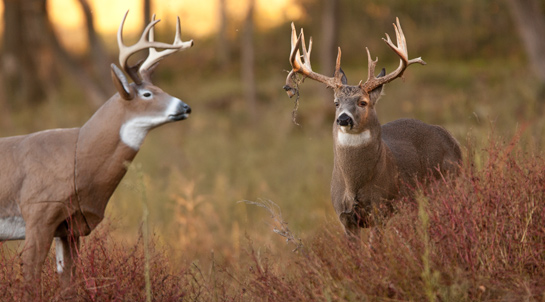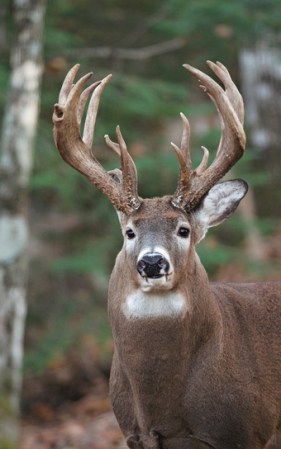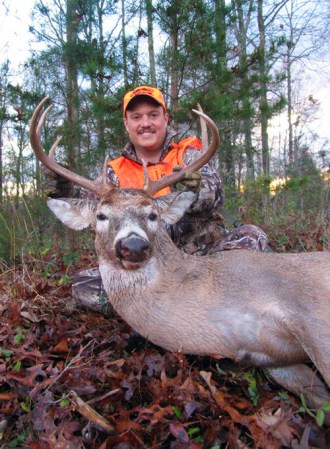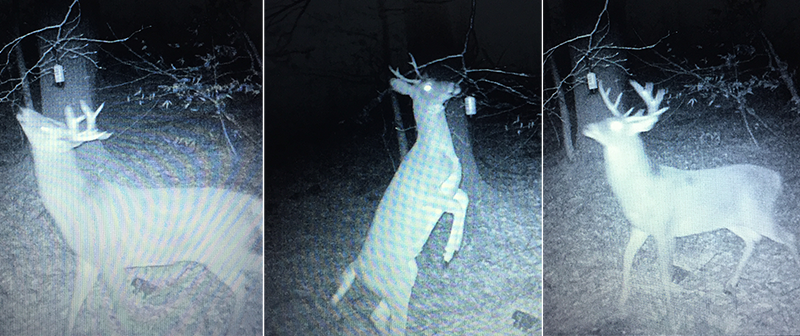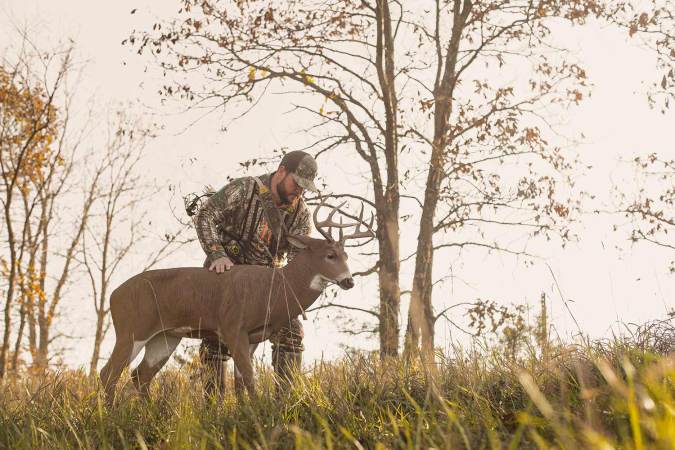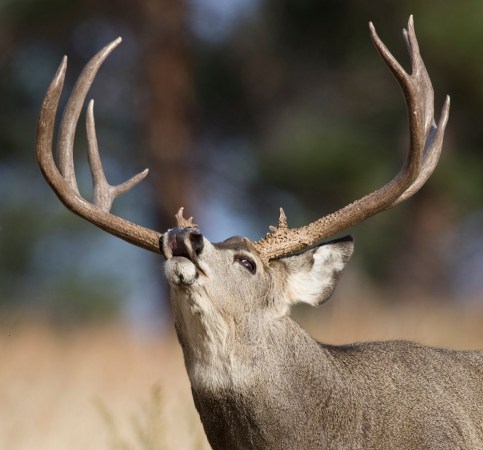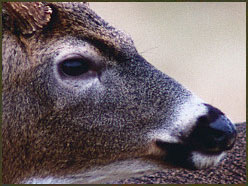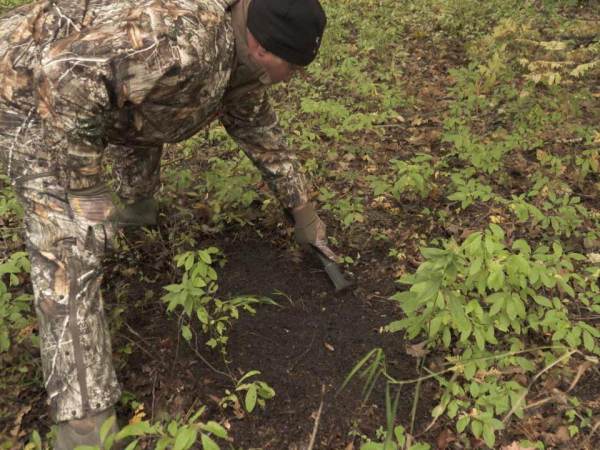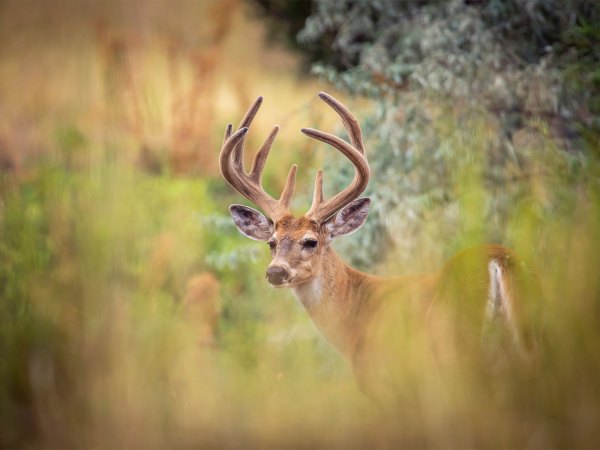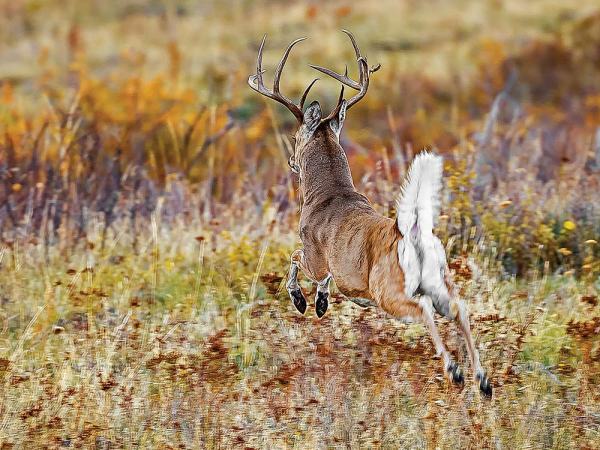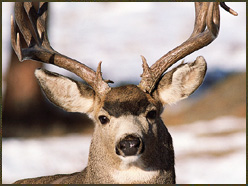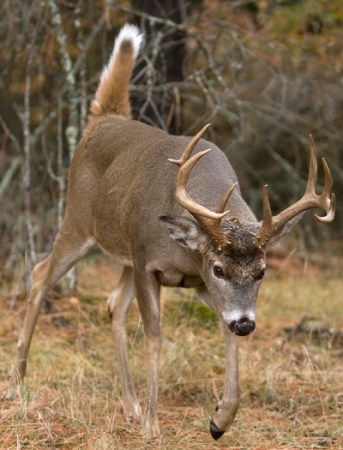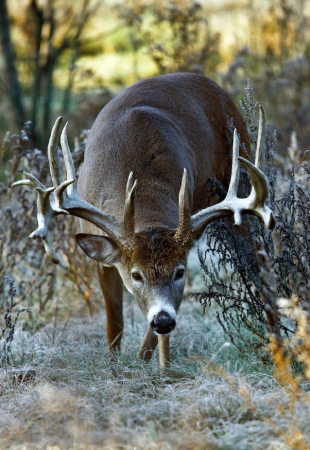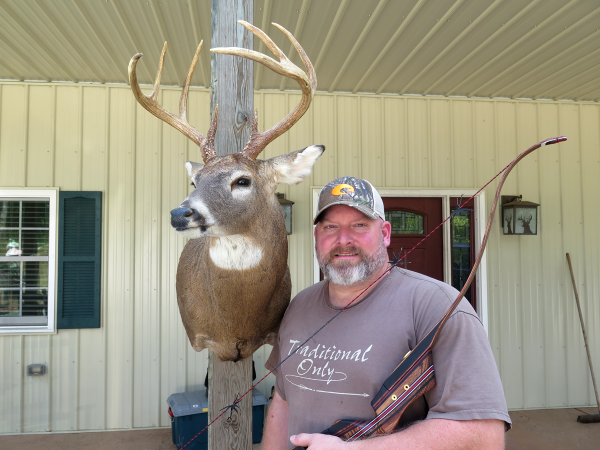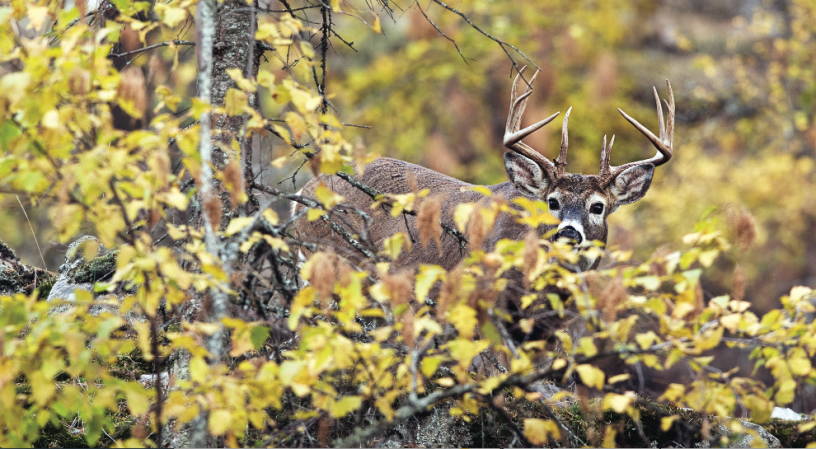It is possible, I know, for a deer hunter never to touch a grunt call, rattling antlers, a decoy or deer scent, and for that hunter to routinely tie his tag on a fine buck. The most important aspects of successful deer hunting, namely woodsmanship, patience and marksmanship, cannot be bought over the counter. I won’t argue those facts. But I also know, from my own experience, that I have killed more deer and bigger bucks because I use calls, decoys and scents. Most of all, these tools have added immeasurably to my sheer enjoyment of deer hunting. And I don’t know about you, but I’ve always figured deer hunting is supposed to be fun.
USE A DEER DECOY TO STOP CRUISING BUCKS
Decoying deer is easy. There are just a few key points to keep in mind to boost your odds. Here are my seven rules of decoying deer:
1. The decoy should be visible to deer from as far away as possible.
2. Decoys will scare more deer than they attract if you use them in heavy cover.
3. The wind should be blowing from the decoy to you. In a pinch, you can hunt in a crosswind. But never place a decoy downwind of your stand or ground blind.
4. When bowhunting, position your decoy no more than 25 yards upwind of your stand. When a buck comes in, he’ll probably circle downwind of the decoy.
5. Handle your decoys with rubber gloves and always spray them with an odor neutralizer.
6. Use scent when hunting over a decoy, but don’t apply it to the decoy directly. Jab a stick in the ground under its belly and hang a scent wick or cotton ball on it. When using a doe decoy I use a doe-in-estrus urine; when using a buck decoy, I go with a buck urine or tarsal gland scent.
7. If you use a buck decoy, face it toward your stand,either head-on or at an angle. A doe decoy should face away from you. The reason to position decoys this way is that when a buck encounters a buck decoy, he almost always circles around its head end–that’s the end that can cause him pain. A buck circles around the rear of a doe decoy because that’s the end of the doe he’s most interested in. If I have to explain that further, you’re reading the wrong magazine. [See Sporting Gear, page 88, for a complete rundown of deer decoys.]
REMEMBER, RATTLING MIMICS BUCKS FIGHTING
When I do deer-hunting seminars around the country and talk about rattling, I can always count on a handful of hunters coming up after the seminar to let me know that rattling might be just the ticket in south Texas, but that it darn sure does not work in their neck of the woods. They’re wrong about that. I’ve rattled in bucks in over a dozen states and provinces and am convinced that rattling works, no matter what a whitetail’s ZIP code might be.
With that said, I’ll be the first to admit that there is a great discrepancy in rattling success around the country. The main reason is herd composition. Buck-to-doe ratio and age structure of the buck population greatly influence rattling success. If there is little or no competition between bucks (especially mature bucks) for available does, don’t expect a buck to come running every time you bang those antlers together. But when the sound of your clattering antlers reaches the ears of a buck in the right mood, that buck will come to investigate.
The 10 days prior to the breeding phase of the rut through the breeding phase itself is a great time to rattle. But I am especially partial to the post-rut phase. During this period, bucks have been having their way with does for a week or so, when suddenly the supply of estrous does dwindles. Bucks don’t give up on a good thing that easy. They go on the prowl for more action. If a buck in that mode hears the sounds of a fight, odds are he’ll check it out.
When I rattle during the rut, I don’t tick the antlers together. I bang them as loud as I can as I break brush, grunt and stomp my feet. When bucks fight, they don’t kid around.
SURROUND YOURSELF WITH SCENT
Before I climb into my tree stand, I usually put four to eight scent wicks juiced up with deer scent in a circle around my stand. I hang the wicks on tree limbs between three and five feet off of the ground. I add approximately six to eight drops of scent to each wick. I’ve used a lot of different brands over the years, and I really don’t have a favorite for this application. I’ve had good luck with doe-in-estrus scent, tarsal gland scent, some synthetic scents and several different gel or paste types of lures.
I don’t think the scent wicks actually draw deer to my stand. But many times I have had bucks stop and spend some time sniffing, licking and sometimes even chewing the scent wicks. When a buck is occupied by a scent wick it’s easy to make a good shot.
I personally know of two bucks big enough to make the Boone and Crockett Club’s minimums that would not have been taken if the hunters had not been using scent wicks. In both cases the bucks were cruising along but slowed down when they got downwind of the wicks.
BLEAT TO CONVINCE A BUCK
For years I didn’t use doe bleats. I figured buck grunts were all I needed to call any deer. I was wrong. There are times when using a doe bleat call, either by itself or in conjunction with tending or trailing grunts, is very effective. Since I started incorporating doe bleats, I have watched a number of bucks ignore my best grunts but change their minds and charge in when I threw in a few doe bleats.
You can make an excellent doe bleat on a good variable-tone grunt call, or you can opt to use one of the handy canister calls sold by Primos, M.A.D. Calls, Quaker Boy and Hunter’s Specialties. Simply turn the can upside down, and when you flip it right side up, it emits a doe bleat. Some call it an estrous bleat, but I’m not convinced about that. Most of the does I’ve heard bleating were trying their best to get away from an amorous buck, not attract old lover boy. But there’s no doubt in my mind that when a buck hears a bleat, he’s darn sure that there’s a doe in the equation.
If you use the bleat alone, don’t be surprised if a doe instead of a buck rushes in. A bleat seems to appeal to a doe’s maternal instincts. They think a fawn is in distress and charge in to do battle.
FRESHEN UP SCRAPES
I juice up any scrapes I hunt over. As with a lot of things in hunting, I can’t prove that adding scent to a scrape works, but I think it does. Many bucks, especially mature deer, tend to scent-check scrapes from downwind. With their sense of smell, it’s easy for them to smell whether or not another deer has visited the scrape. If their nose tells them that the scrape has been visited, they might come in for a closer look. If their nose doesn’t register a hit, they keep moving. That alone makes freshening up any scrape that you’re hunting worth your time. But there is another big plus to doctoring scrapes. When you add scent to a scrape you encourage any buck visiting it to hang around a little while. That means a better opportunity for you to get the perfect shot.
To tune up a scrape, just walk near it (not into it–and don’t laugh, I’ve seen hunters do just that), squirt some of your favorite scent into the scrape and get out of there. There are also many good products on the market that will drip a continuous fresh supply of scent into a scrape. If you are going to sit over a scrape all day, or if you want to encourage bucks to return to a scrape, it’s a good idea to use a product designed to keep a scrape enticing.
GRUNT LIKE YOU MEAN IT
Calling deer is easy. About the only rule you need to remember is that you should never, ever call to a deer that is already headed your way. A whitetail deer is not quite as accurate at pinpointing the exact source of a sound as, say, a wild turkey, but if you insist on calling to deer that are moving toward you, you risk being picked off.
Early in the season, and again late in the season, a simple contact grunt will get the job done. This is just a low-volume, very short grunt that looks like “rrrpp” in print. The contact grunt is simply a buck’s way of asking if there are any other bucks around.
When bucks start scraping, I get aggressive–in my opinion most hunters are too passive with their grunt calls. I switch to either a trailing or tending grunt. Both are repetitious vocalizations; the tending grunt is the louder and more aggressive of the two. The trailing grunt looks like “uurrrrppp–uurrrpp–uurrpppp” in print. It’s the vocalization a buck makes when he’s trailing a doe that’s in estrus. The tending grunt is the vocalization a buck uses when he has finally cornered an estrous doe. It’s probably a warning to other bucks to stay the heck away. There is no right or wrong way to make either the trailing or tending grunt, because bucks all make them differently. I let my tending grunts get loud and long. Something like: “UURRRppp–UUrrrrrrrrrrrrppp–UUUrrrppp.” Sometimes I keep it up for 20 or more repetitions. I’ve heard bucks go on for hours.
PLAY FOLLOW THE LEADER
Rarely do I hike in to my stand without pulling a drag-rag behind me to lay down a scent trail. About the only time I don’t is when I access my stand from straight downwind. Scent trails, like everything else in deer hunting, do not always work. I’ve had deer step across my scent trail and never so much as give it a cursory sniff. Many times I have had them smell it and then just continue on their way. I’ve even had a few bucks follow it in the wrong direction. But several times each season, deer cut a scent trail I laid down and follow it right to my stand. In many cases, these are deer that I would not otherwise have seen. That’s reason enough for me to continue laying down scent trails.
A drag-rag can be something as simple as a clean rag tied to the end of a string. I use commercial drag-rags because they hold much more scent.
I’ve had good luck using tarsal glands from bucks I’ve killed earlier in the season or from road-killed deer. Tarsal glands are easy to cut out of the back legs of a buck or doe with a small fillet knife. Wear rubber gloves so you don’t contaminate the glands with human odor. Put the tarsal glands into Ziploc bags. I like to use one tarsal as is and juice up the other with half an ounce or more of doe-in-estrus urine. Sometimes I drag them both, sometimes just one. I’ve had deer follow when I’ve tried it both ways, so I don’t know which is better.
The biggest buck I’ve ever killed made the mistake of following a trail I’d laid down with a doctored tarsal gland. It was five cold hours after I got on stand when that buck walked in with his nose on the trail.

